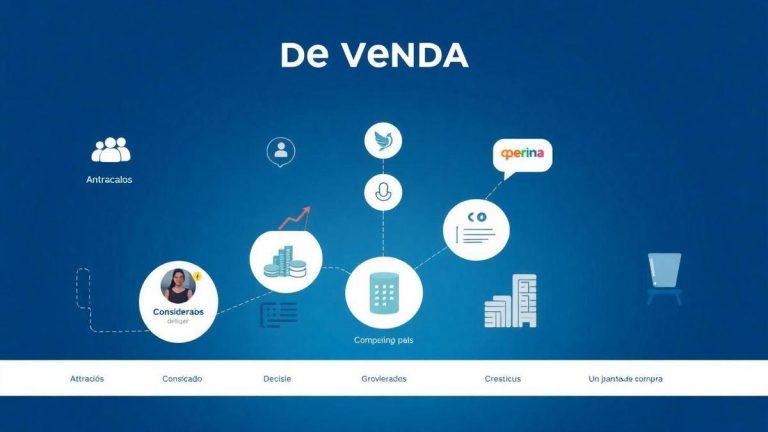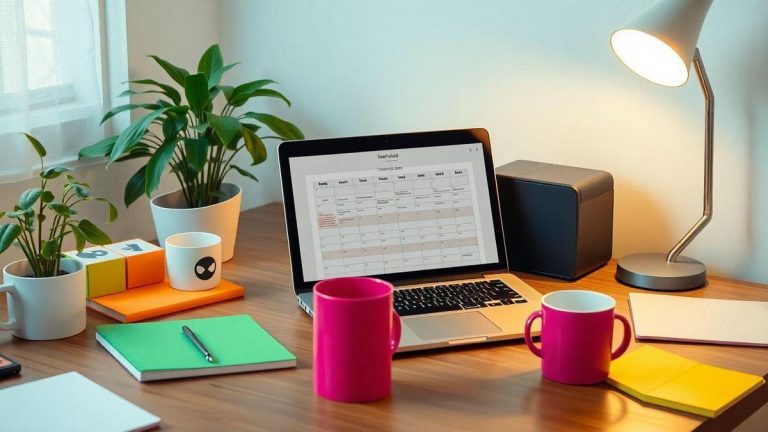Analytics in Practice: How I Use Data to Improve My Strategies
Analytics in Practice: How I Use Data to Improve My Strategies This is how I do magic with numbers! Whenever I think about data, I see a clown in my heart (and believe me, I'm very attracted to clowns). Here, I'll tell you how metrics are my best friends, and how each chart makes me feel like I've won the insights lottery. Get ready to discover how I turn data into actionable actions, learn from hilarious mistakes, and choose the tools I never want to let go of!
How I Use Analytics to Improve My Strategies
Understanding the Data I Have at Hand
When I started using Analytics, I felt like a detective in a mystery movie. The data was there, but I had no idea how to decipher it. It was like trying to understand what my cat was thinking (spoiler: he just wants food). But over time, I learned to look at the numbers and see what they really meant.
For example, I used to obsess over how many people visited my blog. But after a few months, I realized it wasn't just about the number of people visiting, but about who those people were and what they were doing there.
Here are some things I've learned to watch out for:
- Rejection Rate: If people leave my site as quickly as they enter, it's a red flag!
- Average Time on Page: If someone stays longer on a post, maybe I'm doing something right.
- Traffic Sources: Knowing where my visitors come from is like knowing where the food my cat won't share comes from.
The Power of Metrics in Decision Making
Metrics are like that friend who always tells you the truth, even when you don't want to hear it. They help me make smarter decisions about what to do next. If a strategy isn't working, I don't stick with it like a hamster on a wheel. Instead, I change direction.
For example, I once released a post that I thought would be a success total. But the metrics showed that no one was interested. So I made a change, wrote about something that really mattered to my readers, and voilà! Traffic skyrocketed.
| Metric | What it means | What to do with it |
|---|---|---|
| Rejection Rate | People leaving quickly | Improve content or presentation |
| Average Time on Page | Readers' interest | Create more similar content |
| Traffic Sources | Where do visitors come from? | Invest more in sources that bring traffic |
Insights that Transform My Performance
The insights I glean from the data are like little nuggets of gold. They help me understand what works and what doesn't. One time, I noticed a particular type of post was doing well and decided to do more of that. The result? My blog grew like a well-watered plant!
For example, I discovered that list posts (like this one) attracted more attention. So, I started creating more content like that. And it worked! My audience started engaging more, and suddenly, I felt like a blogging rockstar!
Practices I Learned from Data Analysis
Testing and Improving My Strategies
When I started working with data analysis, I felt like a detective trying to solve a mystery. What I didn't know was that for every piece of data I analyzed, there was an infinite amount of possibilities. So, I decided to test several strategies. Some worked, others… well, let's just say I'm not one genius in everything.
For example, I once tried using a button color that I thought was super cool. Spoiler: no one clicked. Then I learned that the data doesn't lie. What I thought was a brilliant idea was actually more like a burned-out lightbulb.
What Works and What Doesn't
Here's the fun part: I compiled a list of what actually it works and what doesn't work. Look:
| What Works | What Doesn't Work |
|---|---|
| Contrasting colors on the buttons | Colors that look like a rainbow |
| Short and direct texts | Long and boring texts |
| High quality images | Pixelated and strange images |
These discoveries helped me adjust my strategies. It's like trying to find the perfect pair of socks: you have to try on several until you find the combination that doesn't make you look like a clown.
Learnings That Changed My Game
And here's the big lesson: data They're like treasure maps. They show you where to go, but only if you know how to read them. One time, I noticed my audience was more active at night. So, I started scheduling my posts for that time. And guess what? My engagement skyrocketed! It was like finding a pot of gold at the end of the rainbow.
Another important lesson was the importance of to analyze Feedback. When people comment or share, it's a clear sign that you're heading in the right direction or that you need to change course.
Analytics Tools I Can't Live Without
My Favorites for Data Analysis
When the subject is data analysis, I'm like a fish out of water if I don't have my analytics tools nearby. Seriously, without them, I feel like a navigator without a compass! Here are my favorites:
| Tool | Why do I like it? |
|---|---|
| Google Analytics | It's like having a superpower. I can see where traffic is coming from and how users interact with my site. |
| Hotjar | What I love? Heat maps! They show where people click. It's like a treasure map, but with clicks! |
| SEMrush | For those who want to see how they're doing compared to their competitors. It's like espionage, but fun! |
| Google Search Console | To understand how Google views my site. It's like having a friend who gives you tips on how to dress better. |
How I Chose the Best Tools
Choosing analytics tools is like choosing a pair of shoes: they need to be comfortable and fit well. I did some research, read a lot of blogs, and even asked friends. What did I look for? Ease of use, resources and of course, if not it would leave me broke!
The Importance of Optimization in Tools
Now, let's talk about optimizationWithout it, your analytics tools are like a car without gas—they won't go anywhere! Optimizing the data you collect is essential to understanding what really works. It's like adjusting a recipe: if you don't add the right amount of sugar, the cake won't rise!
With the right tools and a good dose of optimization, I can see where I'm doing well and where I need to improve. This helps me adjust my strategies and, of course, make smarter decisions for my digital media work.
How I Turn Data into Concrete Actions
From Theory to Practice: Implementing Change
When I started studying programming, the theory seemed like an endless maze. I had more books than a library, and yet I didn't know how to apply it all. But then I realized that data are like that friend who always has the right answer, but you need to know to ask the right way.
So I started using tools analysisOne of them is Google Analytics. The first time I logged in, I thought, "What is this? An alien language?" But over time, I became familiar with it, and believe me, the data began to translate into action. For example, when I noticed that a post about programming tips was getting more views, I decided to create more content in that style. And guess what? The traffic just kept increasing!
The Feedback Loop I Use
Now, let's talk about feedback. No, not the kind you get from your boss when you forget to submit a report. I'm talking about a feedback loop that actually works. I like to think of it as... boomerang: you play, wait to come back and adjust what you need.
- Data Collection: Whenever I publish something, I take a look at the metrics.
- Analysis: What worked? What didn't work?
- Action: Based on this, I make adjustments in the next posts.
- Repeat: And so on.
This cycle helps me to improve my strategies and the to create content that really interests my audience.
The Impact of Actions on Results
Now, let's get to what really matters: results. After adopting this approach, I noticed my metrics started to shine like a star in the sky!
| Action Taken | Result Obtained |
|---|---|
| Post about tips | 50% more views |
| Video tutorial | 30 new subscribers |
| Interactive survey | Increased engagement |
With these changes, I not only increased the number of visitors, but also the engagement. People started commenting and sharing, and that, my friends, is music to my ears!
Common Mistakes I Made and Learned From
What Not to Do with Analytics
Ah, the Analytics! That friend who promises to help you understand everything, but often feels like a maze with no way out. I've made some mistakes that, if I had a penny for each one, could buy a very expensive coffee! One of the biggest mistakes was ignore the data that were right in front of me. You know when you're so focused on a project that you forget to look at what really matters? Well, I did that.
Another trap was becoming obsessed with numbers that don't mean anything. Looking at the number of visitors without knowing if they're actually interacting with content it's like counting how many people came to a party but not caring if they're having fun.
Valuable Lessons from My Failures
If there's one thing I've learned, it's that every mistake is an opportunity in disguise. Here are some lessons I've learned from my failures:
- Look at the big picture: Don't get hung up on a single number. Analyze everything!
- Test, test, and test: What works for me may not work for you. Experiment!
- Feedback is gold: Ask users what they think. Sometimes the answer is right there.
How to Avoid Pitfalls in Data Analysis
To avoid falling into the traps I did, here are some tips that work like a GPS in the jungle of Analytics:
| Tip | Description |
|---|---|
| Set clear goals | Know what you want to achieve before you start. |
| Use visualization tools | Graphs help to understand data in a simple way. |
| Review regularly | Don't let your data gather dust. Always review it! |
By following these tips, you can avoid the same mistakes I made and navigate more securely through the world of data.
The Future of Analytics in My Practice
Trends I'm Watching
When it comes to Analytics, I'm always on the lookout for new trends. You know how it is, right? The digital world changes faster than I can finish a cup of coffee! Lately, I've noticed that artificial intelligence is taking over analytics tools. This means that instead of spending hours analyzing data, I can now simply let a robot do it for me. And believe me, I'm a fan of anything that makes me look smarter, even if it's just having a robot as my assistant!
Another trend that caught my attention is the use of real-time dataThis is like having a superpower! Now, I can adjust my strategies instantly, without waiting forever for reports. It reminds me of the time I launched a campaign and, instead of waiting a week to see the results, I was able to see everything in real time and change what wasn't working. It was like I had a magic button!
Preparing for Market Changes
The market of digital media is constantly changing. To prepare myself, I'm always learning something new. I recently started taking online courses on data analysisAfter all, if I don't keep up with the changes, I'll end up like a dinosaur – and I don't want to be the last of my kind!
Here are some of the things I'm doing to adapt:
- Online courses: There's always a new course that promises to turn me into an expert.
- Networking: Talking to other professionals is like having coffee with friends, except instead of gossip, we exchange valuable tips.
- A/B Testing: I'm always trying new ideas. Sometimes it works, other times it looks like a flying cow just flew by.
The Evolution of Strategies and My Role
The evolution of strategies Analytics It's like a roller coaster. It has ups and downs, but the thrill is around every turn! My role in this adventure is to be the pilot. I need to be alert to changes and ready to adjust the route at a moment's notice.
Here is a summary of my responsibilities:
| Responsibility | Description |
|---|---|
| Data Analysis | Examine data to understand what's working. |
| Strategy Implementation | Put into practice what I learned from the data. |
| Continuous Monitoring | Monitor results and adjust when necessary. |
Being a programming student who works with digital media It's like being a juggler. I have to juggle several tasks at once, but in the end, it's all worth it!







